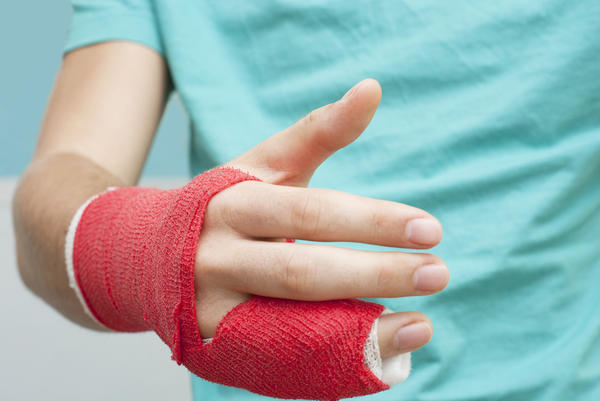Broken fingers or fractured phalanges are common injuries that cause pain and swelling, but you need to bear in mind that swelling or pain does not always mean you have a broken finger. Even a ligament tear or sprain will be quite painful, but you do not need to visit the emergency room for these injuries. If it is a broken bone, you should seek immediate medical attention. Keep reading to learn how to tell if your finger is broken or not.

How to Tell If Your Finger Is Broken?
A number of indicators will help determine if your finger is indeed broken or it is just a sprain. Here is what you should check.
1. Check for Pain
Pain is the obvious sign that something is wrong, but the severity of the fracture will determine the severity of your pain. Even though you experience pain due to sprains and dislocations, a fractured finger may come with acute pain and tenderness.
2. Check for Swelling
Along with acute pain, you will experience bruising and swelling as well. Your body activates the inflammatory response after you sustain an injury and this causes swelling around your affected joint. Sometimes, the capillaries around the affected joint will burst due to increased fluid pressure into the tissues, leading to bruising. Your swelling may become more evident when you try to move your fractured finger.
3. Look for Deformity or Inability to Move
In a finger fracture, you have broken a segment of your finger and it is usually not possible to move it. You may also notice bone deformity such as unusual bumps on the affected finger. Any signs of misalignment are usually indicative of a fracture. Sometimes, you cannot move your finger due to severe swelling and bruising.
4. Know When to See a Doctor
You should seek immediate medical attention if you believe you have a finger fracture. Fractures do not usually look too bad in the beginning, but they are complicated injuries and require specific treatment for quick healing. If your child has sustained a finger injury, take them to a doctor as soon as possible. Their growing bones are more susceptible to fractures that may lead to several complications in the future. Be sure to see a medical professional for treatment because inadequate treatment may leave your finger stiff for life.
- Could It Be Sprained or Jammed?
Finger sprains or jammed fingers are injuries to the bands of tissue that help keep your bone connected with the joint. It is not easy to learn how to tell if your finger is broken because you will experience pain, swelling and stiffness whether you have a broken finger or jammed finger.
However, if it is a sprain, you will notice swelling appear soon after the injury. Bruising usually does not show right away or it may never show at all. Even if bruising does appear, it will appear a bit further from your affected joint because blood from the damaged tissue will sweep along the muscles before showing on the skin. The finger will not look deformed and the swelling will subside soon. Sprains usually get better in a couple of days or so.
How to Treat Your Broken Finger
It is important to understand how to tell if your finger is broken, but it is equally important to learn how to treat your fractured finger. You can take some self-care measures to make your pain more manageable. However, in some severe cases, you will have to see your doctor who will take an x-ray to evaluate how serious your injury is. The type of fracture will help determine the best treatment option.
1. Self-Care
Give your fractured finger plenty of rest. Ice it for 15 minutes at least after every hour or so. Continue with this for the first 48 hours of injury. After 48 hours, apply heat to your affected finger. Never apply heat or ice directly to the skin. Keeping your finger elevated above your chest level will also help reduce swelling.
2. Medications
Your doctor may prescribe some medications to help treat your injury and alleviate pain.
- NSAIDs
You can take NSAIDs to treat pain, swelling and fever. These are OTC medications, but be sure to take as directed because they can cause kidney problems and stomach bleeding if not taken properly.
- Antibiotics
In case you have an open wound, your doctor may also prescribe antibiotics to help prevent any bacterial infection.
- TD Vaccine
You may have to take this booster shot to prevent diphtheria and tetanus. For some specific injuries, you will have to take a TD booster shot every 10 years.
3. Splinting
Your orthopaedic surgeon may recommend using a splint. Splinting proves effective when your fracture is stable. The doctor will splint one finger with another using a medical tape. You will have to keep this splint for up to 4 weeks or so. Sometimes, you need to wear it for another 2 weeks with no hard exercise.
4. Surgery
For an unstable fracture, it is important to immobilize the injured finger. Your doctor will perform a surgical procedure and apply a splint after aligning the fracture fragments. He may pin your bones with small wires or even use screws and plates to keep fractured bone in place. Your surgeon will explain different options before performing a surgical procedure.
